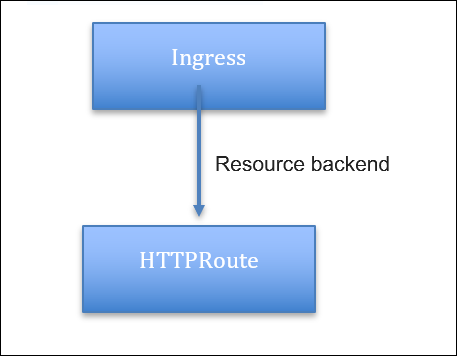Advanced content routing for Kubernetes Ingress using the HTTPRoute CRD
Kubernetes native Ingress offers basic host and path-based routing which is supported by the NetScaler Ingress Controller. NetScaler also provides an alternative approach using content routing CRDs for supporting advanced routing capabilities. Content Routing CRDs include Listener CRD and HTTPRoute CRD. These CRDs provide advanced content routing features such as regex based expression and content switching based on query parameters, cookies, HTTP headers, and other NetScaler custom expressions.
With the Ingress version networking.k8s.io/v1, Kubernetes introduces support for resource backends. A resource backend is an ObjectRef to another Kubernetes resource within the same namespace as an Ingress object.
Now, NetScaler supports configuring the HTTP route CRD resource as a resource backend in Ingress. By default, Ingress supports only limited content routing capabilities like path and host-based routing. With this feature, you can extend advanced content routing capabilities to Ingress and configure various content switching options. For a given domain, you can use the HTTPRoute custom resource to configure content switching without losing the third party compatibility support of the Kubernetes Ingress API.

Note:
This feature supports the Kubernetes Ingress version
networking.k8s.io/v1that is available on Kubernetes 1.19 and later versions.If the Ingress path routing and
HTTPRouteare used for the same domain, all the content routing policies from theHTTPRouteresource get lower priority than the Ingress based content routing policies. So, it is recommended to configure all the content switching policies of theHTTPRouteresource for a given domain if advanced content routing is required.
Configure advanced content routing for Kubernetes Ingress using the HTTPRoute CRD
This procedure shows how to deploy an HTTPRoute resource as a resource backend to support advanced content routing.
Prerequisites
- Ensure that the ingress API version
networking.k8s.io/v1is available in the Kubernetes cluster. - Ensure that the HTTPRoute CRD is deployed.
Deploy the Ingress resource
Define the Ingress resource with the resource back-end pointing to a HTTPRoute custom resource in a YAML file. Specify all the front-end configurations such as certificates, front-end profiles, front-end IP address, and ingress class as part of the Ingress resource.
Following is a sample Ingress resource named as sample-ingress.yaml.
apiVersion: networking.k8s.io/v1
kind: Ingress
metadata:
name: kuard-ingress
annotations:
ingress.citrix.com/frontend-ip: "x.x.x.x"
ingress.citrix.com/insecure-termination: "redirect"
spec:
ingressClassName: citrix
tls:
- secretName: web-ingress-secret
rules:
- host: kuard.example.com
http:
paths:
- pathType: ImplementationSpecific
backend:
resource:
apiGroup: citrix.com
kind: HTTPRoute
name: kuard-example-route
<!--NeedCopy-->
After defining the Ingress resource in a YAML file, deploy the YAML file using the following command. Here, sample-ingress.yaml is the YAML file definition.
kubectl apply -f sample-ingress.yaml
In this example, content switching policies for the domain kuard.example.com are defined as part of the HTTPRoute custom resource called kuard-example-route. Certificates, frontend-ip, and ingress class are specified as part of the Ingress resource. Back-end annotations such as load balancing method and service group configurations are specified as part of the HTTPRoute custom resource.
Deploy the HTTPRoute resource
Define the HTTP route configuration in a YAML file. In the YAML file, use HTTPRoute in the kind field and in the spec section add the HTTPRoute CRD attributes based on your requirement for the HTTP route configuration.
For more information about API description and examples, see the HTTPRoute documentation.
Following is a sample HTTPRoute resource configuration. This example shows how to use query parameters based content switching for the various Kubernetes back-end microservices.
apiVersion: citrix.com/v1
kind: HTTPRoute
metadata:
name: kuard-example-route
spec:
hostname:
- kuard.example.com
rules:
- name: kuard-blue
match:
- queryParams:
- name: version
contains: v2
action:
backend:
kube:
service: kuard-blue
port: 80
- name: kuard-green
match:
- queryParams:
- name: version
contains: v3
action:
backend:
kube:
service: kuard-green
port: 80
- name: kuard-default
match:
- path:
prefix: /
action:
backend:
kube:
service: kuard-purple
port: 80
<!--NeedCopy-->
After you have defined the HTTP routes in the YAML file, deploy the YAML file. In this example, httproute is the YAML definition.
kubectl apply -f httproute.yaml